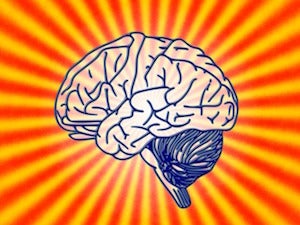By GLENN FOX, The Greater Good Science Center
Read more articles like this on Greater Good.
Imagine you are on the run from a Nazi manhunt and are taken under the protection of a stranger. This stranger spends the winter providing you with food and shelter—even traveling to other towns to relay messages to your family members—yet has no hope or expectation of repayment from you. While your loved ones are systematically ensnared by the Nazi machine, this stranger keeps you alive and nourishes your faith in humanity, offering proof that in the midst of widespread horror, many individuals still act with unfettered compassion and dignity.
When you think about this stranger, what they risked, what you received—how would you feel?

You may feel a rush of positive emotion, joy from the relief of worrying about survival, and a sense of close connection to the stranger who has given you this gift. In concert, these feelings could be described as gratitude.
Gratitude is celebrated throughout philosophy and religion; recent scientific studies suggest it carries significant benefits for our mental and physical health. But very little is known about what actually happens in our brain and body when we experience it.
Why does that matter? Because better understanding the physiology of gratitude can help pinpoint strategies for harnessing its health benefits and help people understand the importance of fostering this powerful emotion. The goal of my research has been to lay the groundwork for understanding what happens in the brain when we feel grateful—and a picture of the grateful brain is now starting to emerge.
What can the brain tell us about gratitude?
When I first embarked on the journey to study gratitude, I came across philosophical treatises and religious exhortations emphasizing the importance of gratitude, along with scientific studies suggesting that gratitude can improve your sleep, enhance your romantic relationships, protect you from illness, motivate you to exercise, and boost your happiness, among many other benefits.
At the time, however, very little was known about what happens in our brains and bodies when we experience gratitude, which made it difficult to understand how gratitude actually works. Since I’m a neuroscientist, I zeroed in on the neurobiology of gratitude with a more specific question in mind: Can our brain activity reveal anything about how gratitude achieves its significant benefits?
Given the clear relationship between mental and physical health, I thought that understanding what happens in the brain when we feel gratitude could tell us more about the mind-body connection—namely, how feeling positive emotion can improve bodily functions. I also thought these results could help scientists design programs aimed at generating gratitude by helping them zero in on the precise activities and experiences most essential to reaping gratitude’s benefits.
It must be said that actually capturing people in the moment of feeling gratitude poses some challenges. After all, some people may not feel gratitude when we expect them to, and others may even feel grateful in unexpected situations. I thought my best bet would be to try to induce gratitude through powerful stories of aid and sacrifice.
How to make a brain grateful
To achieve this, I turned to the USC Shoah Foundation Institute for Visual History, which houses the world’s largest repository of videotaped Holocaust survivor testimonies—many of which, perhaps surprisingly, are filled with breathtaking acts of selflessness and generosity.
Along with a team of amazing undergraduates, I began by watching hundreds of hours of survivor testimony to find stories in which the survivor received help of some kind from another person.
We assembled a collection of these stories and transformed them into short scenarios that we shared with our participants. Each scenario was re-phrased into the second-person (e.g., “You are on a wintertime death march and a fellow prisoner gives you a warm coat”) and presented to our study’s participants. We asked them to imagine themselves in the scenario and feel, as much as possible, how they would feel if they were in the same situation. While participants reflected on these gifts, we measured their brain activity using modern brain imaging techniques (in the form of functional magnetic resonance imaging, or fMRI).
For each of these scenarios, we asked participants how much gratitude they felt, and we correlated this rating with their brain activity in that moment. While such an approach will not elicit exactly the same feelings as actually living through such situations, participants overwhelmingly reported strong feelings of gratitude, deep engagement in the task, and, perhaps even more importantly, an increased empathy for and understanding of the Holocaust as a result of participating in the study.
To continue reading, visit What Can the Brain Reveal About Gratitude?